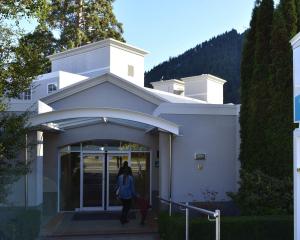A family which wants to commemorate a lakes district pioneer whose descendants have lived in the Wakatipu area for 150 years by erecting a memorial in the Queenstown Gardens hope to have their application approved, despite a report recommending otherwise.
A report by Queenstown Lakes District Council parks manager Gordon Bailey said Richard Bryant approached the council in March seeking to place the memorial to Richard Cogar Bryant at Labour Weekend, near the lake edge of the Queenstown Gardens Peninsula, just off the lower gardens' perimeter track.
Mr Bryant is the pioneer's great-grandson.
However, Mr Bailey has recommended the community services committee decline the application, in line with the Queenstown Gardens Management Plan, which states the council should "prohibit the placement of any further memorials or memorial plaques within the gardens".
When contacted by the Otago Daily Times, Mr Bryant said he hoped the committee would reject the recommendation.
The Bryant family is marking 150 years of living in the Wakatipu with a family reunion at Labour Weekend.
A ship's captain in his father's fleet in England, Richard Cogar Bryant moved to Melbourne, where he worked in the water police before making his way from Port Chalmers to Queenstown in 1861, becoming a policeman.
For a time, he was in charge of the gold escort to Kingston and was also appointed Lake Wakatipu harbourmaster.
In 1868, he and his wife, Mary, became the first permanent residents of Kinloch, building the Glacier Hotel and buildings serving as a post office and steamer agency, now known as Kinloch Lodge.
The council's policy states the Queenstown Gardens include "important memorials" to explorers Captain Scott, Hake Te Karu and William Rees.
Memorials have also been constructed for mountaineers Bruce Grant and Andy Harris.
"The continual placement of memorials has the potential to transform the character of the gardens from a public garden to a cemetery and it is considered that the capacity for the gardens to accommodate further memorials has been reached and no further memorials should be permitted," Mr Bailey said in the report.
"However, if council saw fit, space does exist for the erection of a memorial around the lake edge of the perimeter track. If tastefully done, it could blend in with the landscape of this area."
Mr Bryant's application said the monument would consist of a vertical stone, about 1.8m high, sitting in a concrete base about 0.5m off the ground, serving as a seat, and would include a bronze plaque.
The committee will discuss the application on Tuesday.












